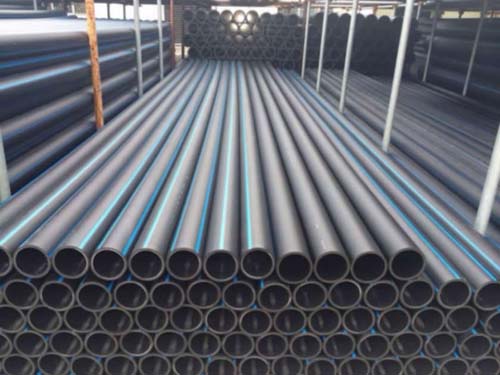Processing Method Of Hdpe Material
We are professional conveyor roller manufacturers in China.HDPE Roller is one of our hot products.The unique characteristics of various grades of HDPE are the appropriate combination of four basic variables: density, molecular weight, molecular weight distribution, and additives. Different catalysts are used to produce custom specialty polymer. These variables combine to produce HDPE grades for different applications; achieving the best balance in performance.
1. Extrusion: Grades used for extrusion production generally have a melt index of less than 1 and a medium to wide MWD. A low MI gives a suitable melt strength during processing. The wider MWD grade is more suitable for extrusion because of their higher production speed, lower die pressure and reduced melt fracture tendency.
HDPE has many extrusion applications such as wires, cables, hoses, tubing and profiles. Pipe applications range from small-section yellow tubes for natural gas to thick-walled black tubes for industrial and urban pipelines up to 48 in. diameter. Large diameter hollow wall tubes are used as an alternative to rainwater drains and other sewer lines made of concrete to grow rapidly.
Sheets and thermoforming: The thermoformed linings of many large picnic-type reefers are made of HDPE for toughness, light weight and durability. Other sheet and thermoformed products include fenders, tank liners, tray guards, shipping boxes and cans. A large number of rapidly growing sheet applications are in the mulch or pool bottoms, which are based on MDPE’s toughness, chemical resistance and impermeability.
2. Blow molding: More than 1/3 of HDPE sold in the United States is used for blow molding purposes. These range from bottles containing bleach, motor oil, detergents, milk and distilled water to large refrigerators, car fuel tanks and canisters. Blow molding grade characteristics such as melt strength, ES-CR and toughness are similar to those used for sheet and thermoforming applications, so similar grades can be used.

Injection-blow molding is commonly used to make smaller containers for packaging medicines, shampoos and cosmetics. One advantage of this process is the automatic cornering of the bottles, without the need for post-finishing steps like normal blow molding. Although some narrow MWD grades are used to improve surface finish, medium to wide MWD grades are typically used.
3. Injection molding: HDPE has numerous applications ranging from reusable thin-walled beverage cups to 5-gsl cans, which consume 1/5 of domestically produced HDPE. Injection molding grades generally have a melt index of 5 to 10, and have a higher flowability grade with a lower toughness grade and processability.
4. Rotational molding: Materials using this processing method are generally pulverized into a powder material to be melted and flowed in a thermal cycle. HDPEs typically have densities ranging from 0.935 to 0.945 g/cc and have a narrow MWD for high impact and minimal warpage, with melt indices typically ranging from 3-8. Higher MI grades are generally not applicable because they do not have the desired impact and environmental stress crack resistance of rotomoulded products.
HDPE material is processed into HDPE pipe by extrusion technology. The pipe is used in many places and used to make HDPE idler. It can play a good anti-corrosion function and is often used in acid and alkali environments, such as fertilizer plants.If you need more information about belt conveyor idler roller,contact us.